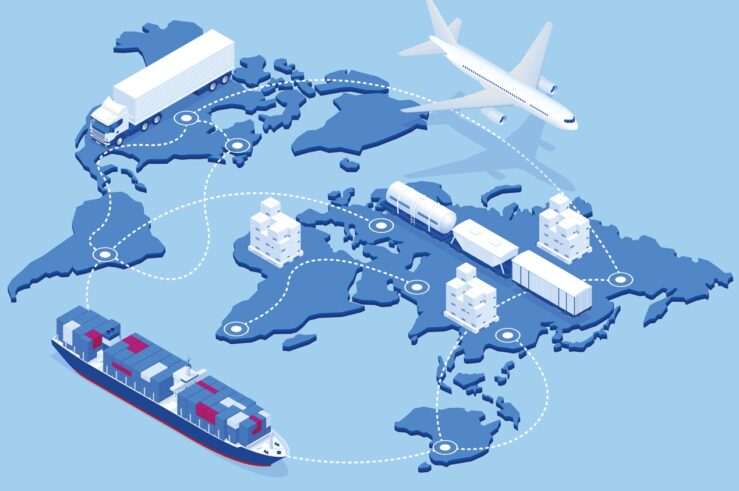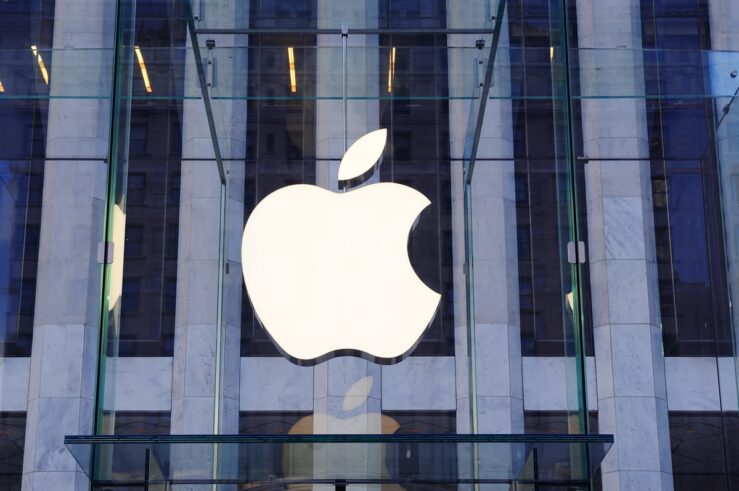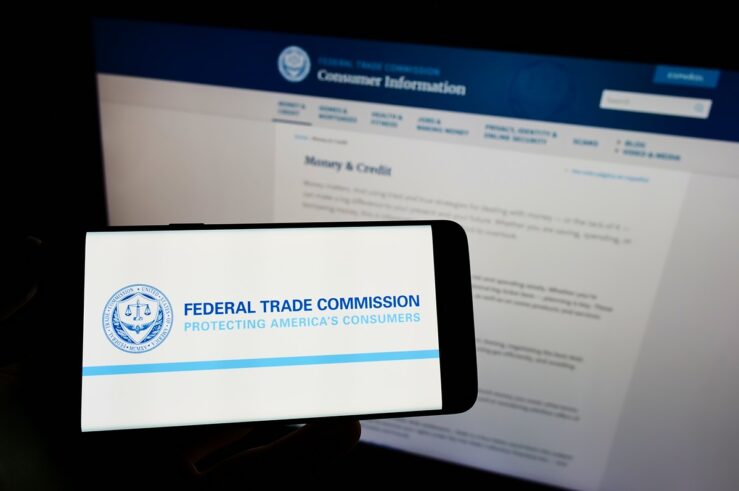The Federal Trade Commission announced a puzzling complaint filed in a new consummated merger & monopolization case in the U.S. District Court for the District of Minnesota. Here’s the explanation of the case from the press release:
The Federal Trade Commission today filed a complaint in federal district court challenging Ovation Pharmaceuticals, Inc.’s January 2006 acquisition of the drug NeoProfen, which eliminated its only competitor for the treatment of a serious and potentially deadly congenital heart defect affecting more than 30,000 babies born prematurely each year in the United States. When it acquired NeoProfen, Ovation already held the rights to Indocin I.V., the only other drug used to treat this serious condition. After ensuring that it would not face competition from NeoProfen, Ovation promptly raised the price of Indocin nearly 1,300 percent, from $36 to nearly $500 a vial. When it launched NeoProfen in July 2006, Ovation set a similarly inflated price.
There are two transactions here. In the first, Ovation purchased the rights to Indocin from Merck. In the second transaction, Ovation purchased the rights to NeoProfen from Abbott while NeoProfen was awaiting FDA approval. NeoProfen was apparently the only potential substitute for Indocin with respect to treatment of PDA in premature babies. The press release emphasizes the apparent and remarkable 1300% price hike that occurred after the second transaction.
Here’s where things get interesting. The Complaint challenges the second, Neoprofen transaction on the grounds that it violates both the Clayton Act Section 7 and Section 2 of the Sherman Act, though both Commissioners Rosch and Leibowitz indicate in their Concurring Statements that they would also challenge the consummated Indocin transaction with fell below the HSR reporting thresholds. I don’t want to comment on the Section 7 case associated with the NeoProfen transaction. The theory appears reasonable in that the FTC alleges that it is challenging a 2-1 merger in drugs for the treatment of PDA in premature babies. This will ultimately be resolved on the facts. But there is no reason to believe that the theory is flawed. I don’t think the same can be said for the statements from Comissioners Rosch and Leibowitz that are largely dedicated to letting the world know that they would also challenge the Indocin/Merck transaction.
Commissioners Rosch‘s Concurring Statement, in particular, has me puzzled on two fronts: (1) the proposed theory of harm that he would support in pursuing the Indocin transaction which amounted to a transfer of the drug from Merck to Ovation rather than a combination of horizontal competitors, and (2) why is this a monopolization case?
I. EVASION OF A PRICING CONSTRAINT IS NOT A SUFFICIENT CONDITION FOR ACTIONABLE ANTITRUST CONDUCT IN THE MERGER CONTEXT OR OTHERWISE
First, there is the novel anticompetitive theory of the Indocin acquisition (which is not actually challenged but two Commissioners would apparently support on this analysis so I think its still worth discussing):
Merck was a very large ($25 billion in sales in 2007) and sophisticated company. If it profitably could have sold Indocin at a monopoly price it arguably would have done so. However, there is evidence that Merck had a large product portfolio that included a number of pharmaceutical products that were more profitable than Indocin. It is arguable that if it sold at a monopoly price a product used to treat premature babies, that could damage its reputation and its sales of those more profitable products….
There is reason to believe that the sale of Indocin to Ovation had the effect of eliminating the reputational constraints on Merck that had existed prior to the sale. There is evidence that Ovation lacked Merck’s large product portfolio and thus arguably was not concerned, as Merck had been, that the sale of Indocin at a monopoly price would damage its reputation and sales of more profitable products. More specifically, there is evidence that after the transaction, Ovation began charging roughly 1300 percent more than the price at which Merck sold the same product. Put differently, there is reason to believe that Merck’s sale of Indocin to Ovation had the effect of enabling Ovation to exercise monopoly power in its pricing of Indocin, which Merck could not profitably do prior to the transaction. Moreover, there is also reason to believe that the transaction had the effect of substituting Ovation, a firm that had an incentive to protect its ability to engage in monopoly pricing, for Merck, which lacked the same incentive. It is arguable that Merck had no incentive to acquire NeoProfen, but Ovation had an incentive to do so in order to maintain its monopoly pricing in the PDA market. That, in my judgment, would be a violation of Section 7.
Lots of points for creativity here. The idea is that Merck was a multi-product monopolist who was constrained in its pricing of Indocin because it was concerned at a reduction in demand for its other products because consumers would be upset if it priced this life-saving drug at “too high” a level. Under the theory, Merck is setting a profit-maximizing price and figures out that Indocin’s profit-maximizing price would be higher because it is unconstrained by these reputational considerations.
As an initial matter, its seems like everybody here agrees that the the monopoly power associated with Indocin is lawfully acquired and it would not be a violation of the antitrust laws if Merck charged the monopoly price and appropriated the monopoly rate of return to their innovation. Assuming it is correct that there decision to lower the price is to do with these reputational demand concerns, why does it become a violation if they assign something that they were entitled to do under the antitrust laws to a third party?
The implicit answer is that the antitrust laws condemn evasion of pricing constraints. This answer is getting more and more familiar at the current Commission. Let’s follow the pattern. First, Rambus is based on the concept that evasion of patent disclosure rules in the standard setting context violation Section 2 and Section 5. Second, N-Data is based on the concept that evasion of a contractual pricing constraint in the form of a RAND commitment is a violation of at least section 5 even when the monopoly power is lawfully acquired. Third, Ovation now adds to the list the evasion of reputational constraints on pricing as the genesis of actionable antitrust conduct.
Well, if that’s all that the antitrust laws are about, this is easy. Here are a few examples of conduct the FTC could go after that satisfy the “evading a constraint” theory. Why not a monopolist whose pricing is constrained by current demand. That is, the profit-maximizing monopoly price is $20 but the monopolist would REALLY like to charge $25. It is only the fact that current demand is not high enough to support that price that prevents the monopolist from charging it. So, our monopolist comes up with a plan (lets call it a scheme, it sounds worse) to evade the pricing constraint created by current demand by advertising its product to consumers and touting its virtues. Or perhaps its going to invest in the quality of the product. In either event, the purpose of the advertising is to shift the demand to the right and result in higher prices. No matter that output increases, it doesn’t matter because the monopolist is evading a pricing constraint and presumably has violated Section 2. Evading reputational constraints on demand for X is not analytically any different evasion of the constraints imposed on demand by consumer preferences.
But its much worse than that. There is virtually no limit to this evasion theory. Let’s run through some examples. What if Merck evaluated its product line and decided that it would be be better off by dropping some of its product portfolio so that it could increase the price of Indocin? Merck’s decision to drop products from its portfolio, or even the design of those product offerings, are surely an evasion of pricing constraints and a violation of Section 2 if it has monopoly power — and perhaps even if it doesn’t under Section 5. So much for competition as a discovery process. Or what if Merck decided to create a subsidiary to sell Indocin under a different brand name and trade dress to mitigate the reputational costs it would bear from charging a higher price? Or fired the CEO who decided that charging the monopoly price in the first instance would be a bad idea in favor of a new manager who reached a different conclusion and wanted to increase the price? This evasion theory fairly quickly evaporates to the notion that the antitrust law governs prices that are determined to be unreasonable and not the competitive process.
This is what happens when antitrust law unhinges itself from economics, which I fear is a trend at the Commission if N-Data and Ovation are representative.
Commissioner Rosch does offer two defenses of this novel theory. The first is an invitation to dust off Procter & Gamble and old conglomerate merger cases as precedent in support of such a theory. The Commissioner points out that these cases are still good law and have not been overruled. Neither has Von’s Grocery. That’s not much of a defense. Second, the Commissioner argues that we are safe in applying the “evasion of a reputational constraint” theory because it is analytically “similar” to the coordinated effects merger theory endorsed in the Merger Guidelines regarding the elimination of a maverick firm as a unique pre-merger constrain on collusive pricing. The common thread is presumably that both the evasion of a reputational constraint and a pricing constraint from a maverick involve the evasion of some sort of pricing constraint. But its not similar at all. The Merck transaction doesn’t involve the elimination of a competitive constraint on pricing, it is merely moving an asset from one owner to another.
Commissioner Rosch concedes that the theories aren’t exactly identical:
To be sure, the source of the pretransaction constraints on pricing are different (the source in the maverick case being the maverick’s pricing and the source in this case being the reputational effects arguably constraining Merck), but the effect of the transaction in both cases would arguably be to eliminate constraints that would otherwise exist but for the transaction. Indeed, I view the transaction’s arguable anticompetitive effect in this case to be much more pernicious than the acquisition of a maverick because its effect would be to eliminate a constraint on the exercise of monopoly power.
But all constraints on pre-conduct or transaction pricing are not created equal. We know that. NYNEX clearly rejects the notion that evasion of a regulatory constraint can constitute the basis of a Section 2 violation even when it involves bad conduct (fraud) and results in higher prices. We also know that evasion of all sorts of constraints on pricing simply aren’t within the domain of antitrust. Despite the fuzzy logic of the evasion of constraint theory, the FTC doesn’t seem to be willing to apply it to quality investments or product advertising by monopolists. Isn’t price discrimination by giving targeted rebates to marginal consumers and raising the prices to infra-marginal consumers merely an attempt to evade the constraint imposed by the fact that the firm cannot engage in perfect price discrimination? Doesn’t it matter that the pricing constraint from the maverick firm is a constraint that arises out of the competitive process that is eliminated by the transaction?
Sure it does. The maverick theory is sound economics and based on the concept that the acquisition of the maverick changes pricing incentives post-merger because of a change in the nature of competition before and after the merger. That is, acquisition of the maverick makes a reduction in competition more likely post-merger. That’s not true in Indocin/Merck with the evasion of a reputational constraint on prices. The transaction has not altered the nature of competition or the competitive process. Indocin was the sole product. The FTC itself alleges in its monopolization claim that the first transaction gave Indocin monopoly power which it maintained in the second transaction. The transfer may have altered the profit-maximizing price. But not through the required mechanism: it did not reduce competition. The analogy to the maverick theory is fatally flawed. And reliance on the general principle that evasion of pricing constraints through merger or other conduct is a sufficient condition for antitrust liability is misguided and unsound policy precisely because it is without limiting principles, unhinged from sound economic foudnations, and threatens to turn antitrust enforcement into more general regulation of prices and optimal allocation of resources, e.g. which firm should have Indocin?
Kobayashi and Wright predicted some of the mischief that would arise out of the Commission’s adoption of the “evasion of a pricing constraint” view and criticized that view in our paper on Federalism, Substantive Preemption and Limits on Antitrust: The Case of Patent Holdup:
The Supreme Court has developed a number of principles and analytical guidelines for evaluating conduct under Section 2 over the past several decades, but the most directly pertinent to the “evasion of a pricing constraint” theory of monopolization comes from NYNEX.85 In NYNEX, the conduct at issue was “a deception worked upon the regulatory agency that prevented the agency from controlling New York Telephone’s exercise of its monopoly power.” The Court conceded that the evasion of the rate regulation constraint “hurt consumers.” But the Court rejected the view that the defendant’s conduct violated Section 2 because it did not harm the competitive process.86 Specifically, the Court distinguished the attempt to evade the pricing constraint from the unlawful acquisition or exercise of monopoly power by pointing out that “consumer injury flowed … from the exercise of market power that is lawfully in the hands of a monopolist.”87
This is a fatal problem for the “evasion of a pricing constraint” monopolization theory of patent holdup based on renegotiation or modification of ex ante contractual commitments made in good faith and in the absence deception. This theory relies on a consumer welfare conception of the exclusionary conduct standard which the Court has considered and rejected. The Court has similarly rejected the view that any conduct by a monopolist that reduces consumer welfare constitutes exclusionary conduct on the grounds that such a decision rule would result in unacceptable levels of error and administrative costs in Trinko, Weyerhaeuser, and Brooke Group.88
Unfortunately, Ovation, N-Data and Rambus are a powerful trio explicitly endorsing this view of monopolization which we believe is theoretically unsound from both a legal and economic perspective, leads to some very bad results, and despite claims to the contrary, is unbounded limiting principles other than faith in prosecutorial discretion. I understand that this is a lot of attention to devote to the claim that the Commission is NOT bringing. But I think this is a fundamental and systematic error that is likely to influence other enforcement actions and worth discussing.
II. WHY IS OVATION A MONOPOLIZATION CASE?
Let’s talk about a theory that is actually part of the case. In addition to the Section 7 challenge to the second transaction, the FTC alleges that Ovation obtained monopoly power in the acquisition of Indocin from Merck (unlawfully, if you believe the Concurring Statements) and maintained that power in violation of Section 2 with the NeoProfen transaction. If the FTC is right that the second transaction violates Clayton 7 by substantially lessening competition in market for the sale of FDA approved treatments of PDA (if that proves to be a relevant antitrust market), the monopolization claim is redundant as the transction will be enjoined. It doesn’t appear to impact the FTC’s attempt to seek disgorgement. It doesn’t strike me that the Section 2 liability standards are easier to meet than the Section 7 standards here where, if the FTC prevails on market definition, render the transaction at 2-1 which is highly likely to be enjoined in district court. I can’t think of a likely scenario under which the FTC loses on the merger but wins on the monopolization case. Further, I don’t believe it is standard practice to tack on a Section 2 claim to merger challenges where one of the merging parties arguably has monopoly power. Perhaps I’m wrong about that.
One potential answer is that the FTC, in this era of the important debate over the appropriate scope of Section 2 between the agencies, the Commission wants to be very active and visible in aggressively enforcing monopolization cases. Commissioner Leibowitz, for example, is careful to announce that “Ensuring that consumers receive the benefits of health care competition will continue to be a priority of this Agency in the
next administration.” Perhaps this is mixed in here a bit of posturing and advertising for the next administration?
Nonetheless, I find the direction of the various theories and discussions in Rambus-N-Data-Ovation cases troublesome, especially to the extent that the mischief associated with the “evasion of pricing constraint” view of the antitrust laws is exacerbated by what I’ve argued is the occasional departure from sound economic foundations in the dissenting Commissioner’s published views on the DOJ Section 2 Report. Indeed, Commissioner Rosch’s repeats in Ovation his increasingly apparent view that economics and economists should play a minimal role in the shaping of antitrust enforcement decisions and competition policy in the context of his desire to dust off the old conglomerate merger cases to challenge the Indocin transaction. In noting that the Areeda and Hovenkamp treatise criticizes Procter & Gamble and other conglomerate merger cases because the case law “does not reflect current thinking,” Commissioner Rosch highlights that “it would be arrogant to believe that today’s economics is so clearly true that it will never give way to alternative views finding a greater basis for concern.”
Of course, it would be arrogant to believe that today’s economics is always right. Some economic ideas from the past have been rejected in theory, others empirically, and the jury is still out on many more. Economic ideas are not all created equal. But one of the many benefits of having economic science play a role in antitrust enforcement and policy is that it imposes some discipline on enforcers by committing incorporating our best theoretical and empirical understanding into enforcement decisions. It would be horribly misguided to believe that the role of economics in antitrust is limited to picking and choosing economic theories that we see fit for convenience and ignoring the lessons of economics when they conflict with our priors our policy preferences. If there is no commitment to incorporating the best available economic knowledge into our antitrust policy decisions, what else is to stop us from a return to Von’s Grocery? Well, there is the Supreme Court ….




